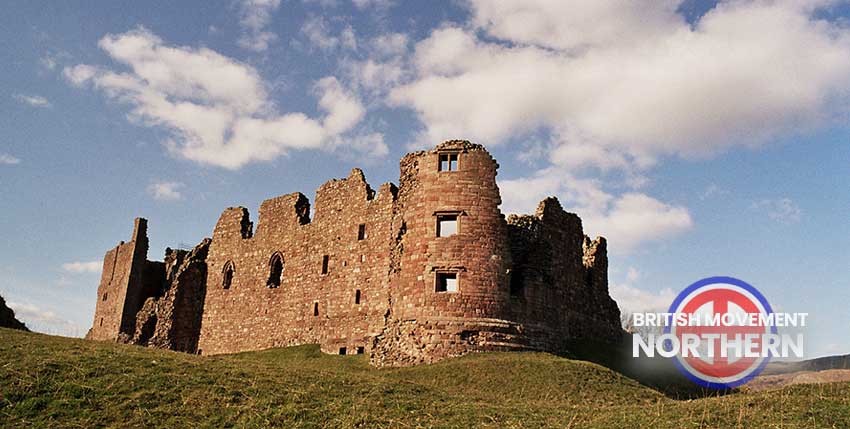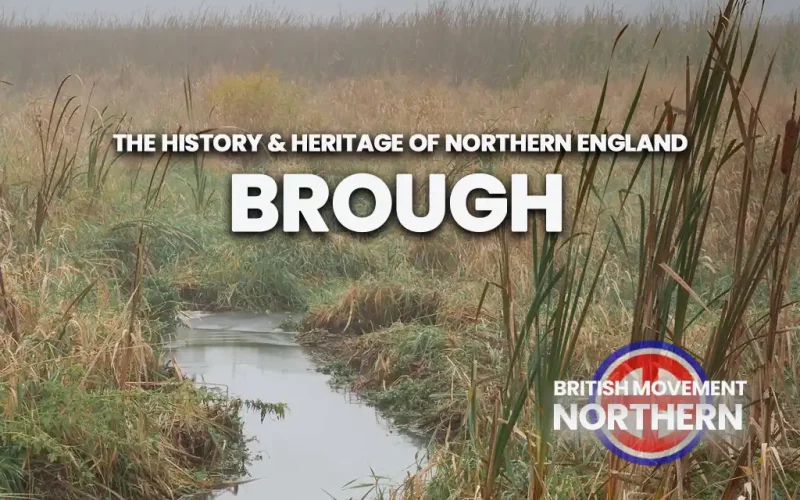Also known as Brough or Burg under Stainmore.
In a break with the usual format of this series, this time the focus is on an historic Northern village, instead of a town or a city, although some local historians refer to Brough as a “township”.
Although Brough is these days classed as being in Cumbria, traditionally the town was in Westmorland. It sits in the North Pennines, on the border between modern Cumbria and County Durham, its governing local authority is Westmorland and Furness.
Brough is the first settlement encountered when travelling West across Stainmore through the Stainmore Pass, these days the route of the A66. Over the centuries Stainmore has had a number of spellings, ‘Steinmhor’, ‘Stainmor’ and ‘Stainmoor’.
In the pre-Roman centuries, there is no record of a settlement here although the region was loosely under control of the Celtic Brigantes tribe, although it was a boundary territory with the Carvetii.
During the Roman period, a road was built across the North Pennines, the Roman road connecting the garrisons at York, Catterick and Carlisle, as well as giving a direct route down into the Eden Valley. The strategic importance of the Roman road as it dropped down through the pass leant the Roman army to build a fort at Brough, the fort was known as Verterae or Verteris, and the village probably grew up in the shadow of its walls.
After the Roman period ended, the region was subject to the shifting power struggles of the Anglo-Saxon period. The village sat on the boundary territory between the kingdom of Cumbria and the kingdom of Northumbria. Cumbria being contested at times by the Strathclyde Welsh. In the 6th Century this region broke away to become ‘Westmoringa Land’ and was ruled by an Anglian people known as the
‘Westmoringas’.
When the north of England came under the rule of the Viking kings of York, the old Roman road remained the best route over the hills into the Eden Valley and beyond. In the latter days of the Danelaw, the last Viking king of York, Erik Bloodaxe was killed in a battle on Stainmore, when his retinue was ambushed. Brough is reputed to be the closest settlement.
The medieval chronicler Roger of Wendover wrote in the early 13th Century of the “a certain lonely place which is called Stainmore.” This emphasis was on the isolated nature of the landscape above Brough where Eric Bloodaxe was killed.
Brough Castle is the most significant historical feature. built in the immediate period after the Norman pacification of Northern England. The first Norman castle was built by the Conqueror’s son, William Rufus, and was established in the middle of the site of the old Roman fort.
The Norman overlords built a church at Brough, but the church was badly damaged in the year 1174 when an invading army of Scots, led by King William the Lion of Scotland, attacked Brough Castle. The church was subsequently rebuilt and expanded, drawing on the presence of a local sacred well, a feature of pilgrimage in the early Christian period in the North- West. This well has disappeared but once existed in the centre of the village.
In the 17th Century Brough Castle was taken over and restored by Lady Anne Clifford and survived the shifting tides of the English Civil War. Brough remained a small rural village with an occasional fair and livestock market. In the 19th Century it was noted for the local winter tradition associated with Twelfth Night and New Year when a burning holly bush was paraded through the village to the local inn.
Brough is a White village; the population is tiny, less than 800 people, the most recent census data (2011), gives the population break down as White British and other White nationalities, which includes Irish and Eastern Europeans. Brough is so far from major towns or cities that it is ‘unattractive’ to the ethnic minorities.

Resources
Lower Image: No machine-readable author provided. Supergolden assumed (based on copyright claims)., CC BY-SA 3.0, via Wikimedia Commons
The British Movement welcomes articles for possible inclusion on this site from members and supporters across the North of England. Please remember that we have to operate within the laws of this country – we will not include any content that is against the current laws of the United Kingdom. News reports should be topical and be relevant to the regions covered by this website.












